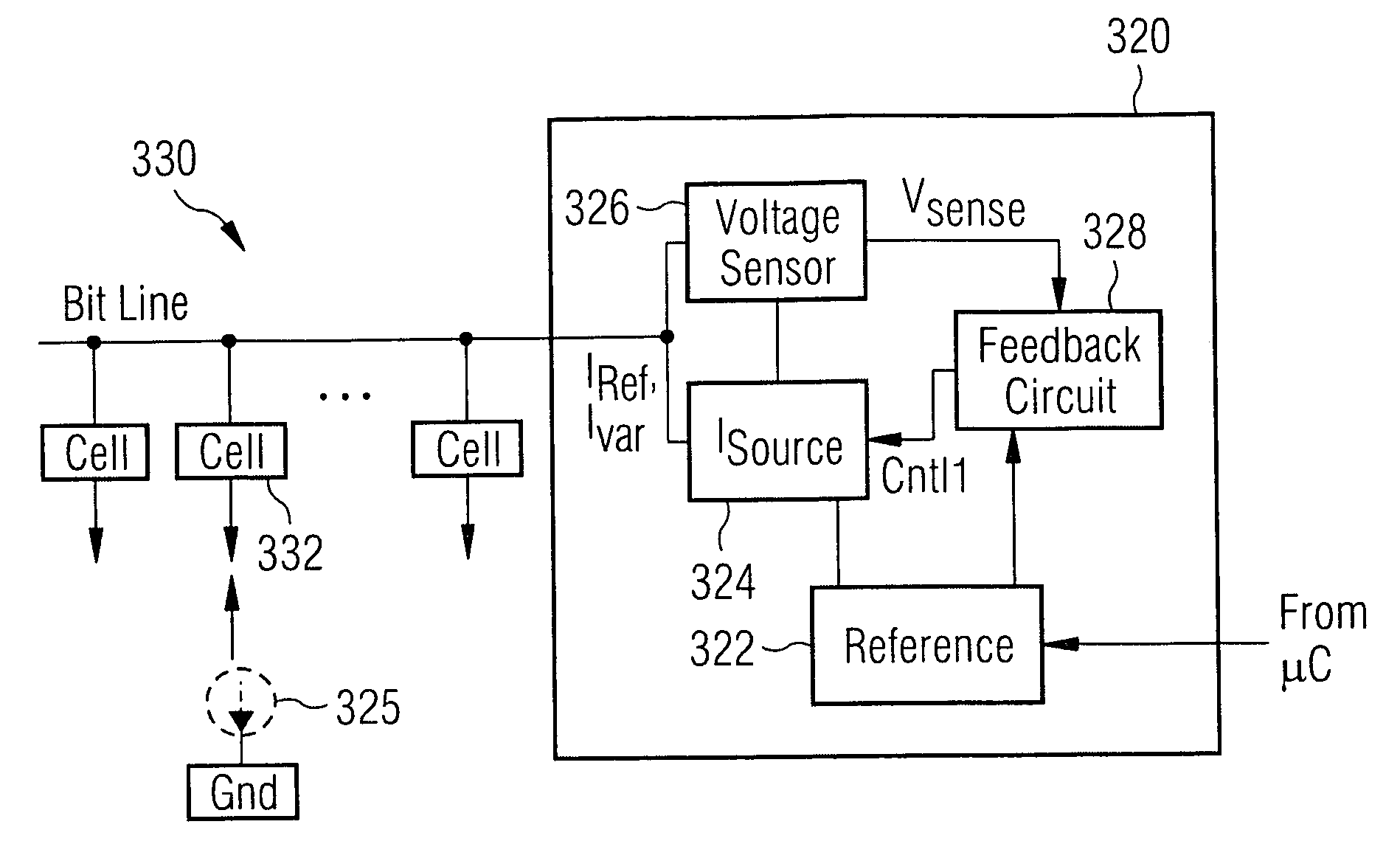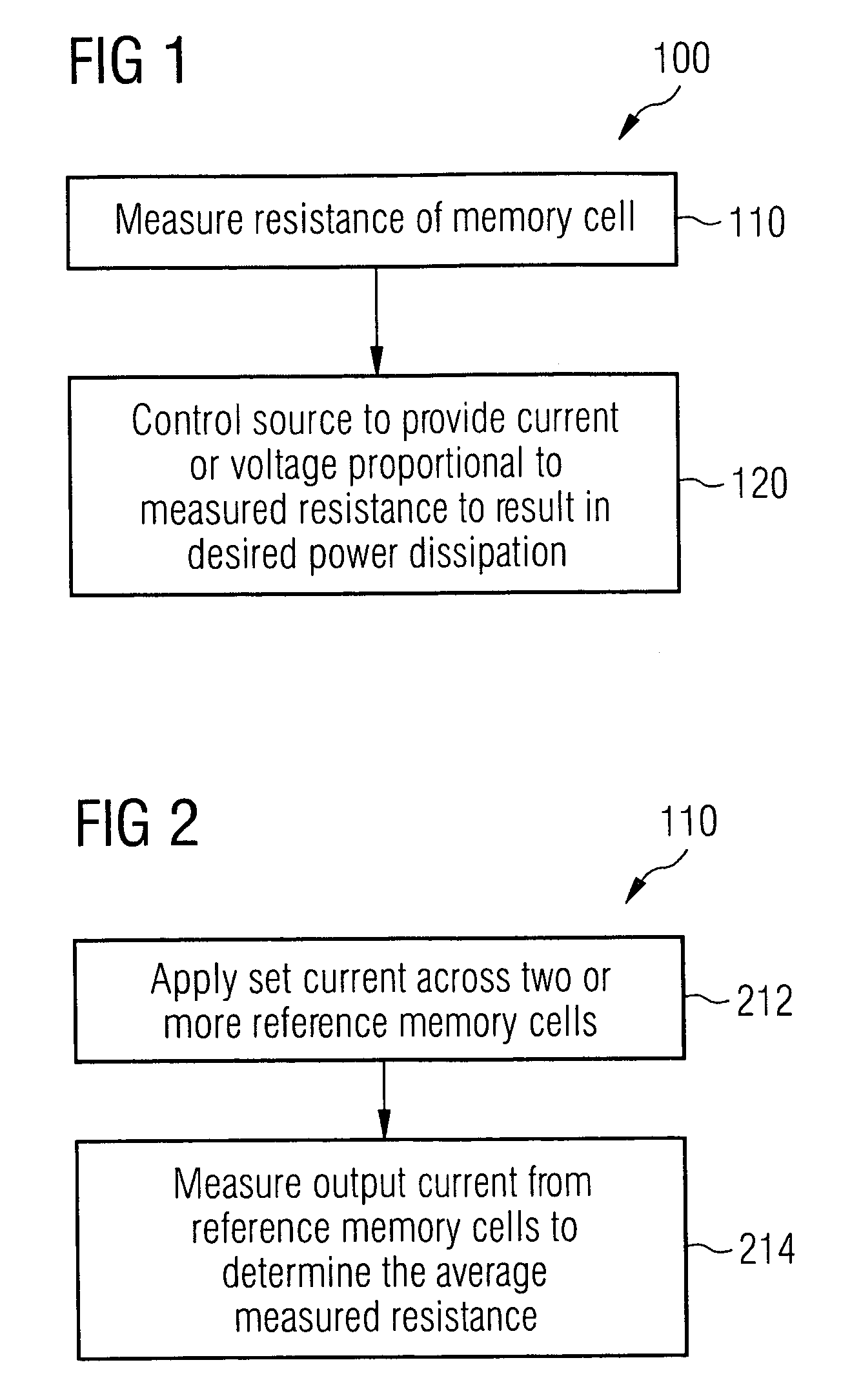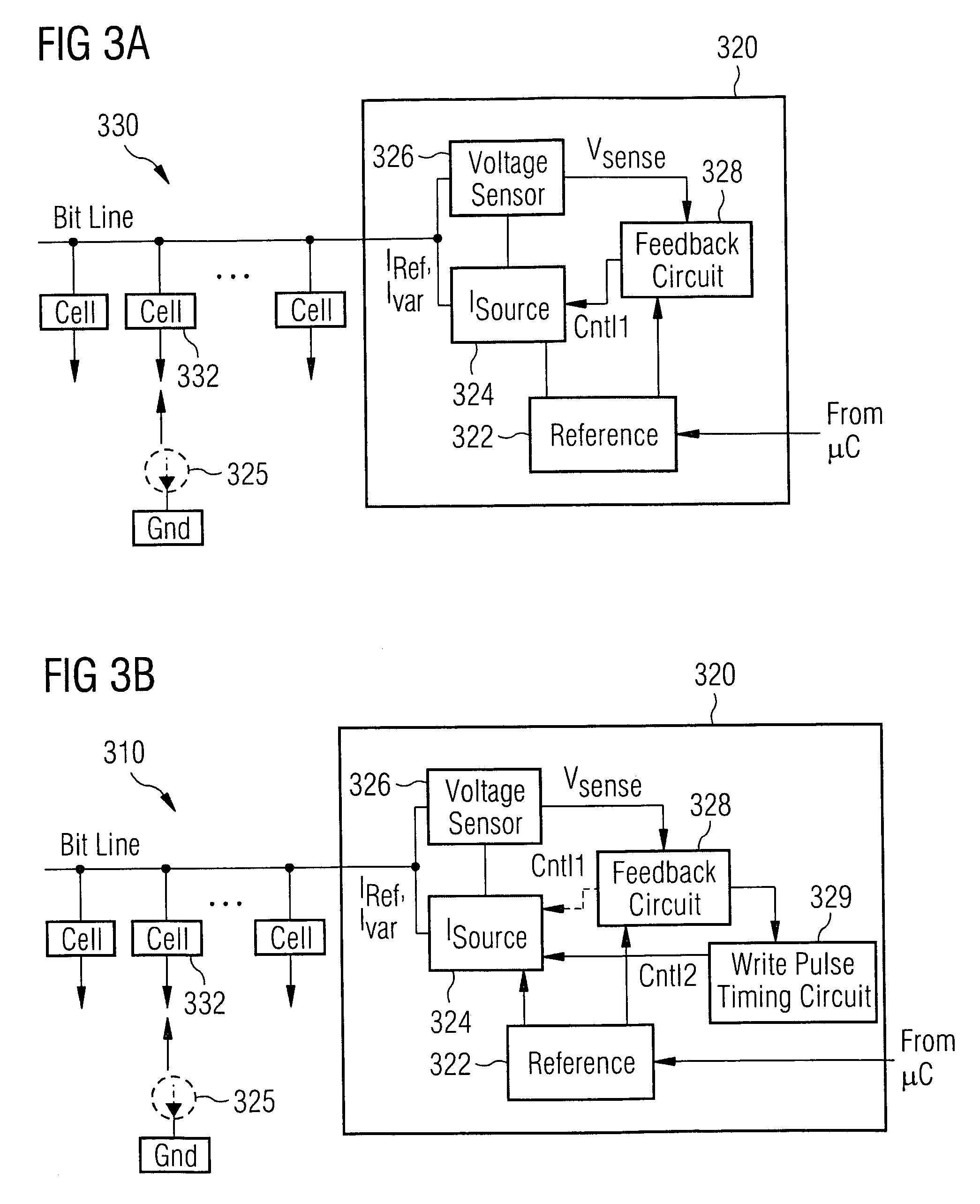System and method for controlling constant power dissipation
a technology of constant power dissipation and memory cells, applied in the field of memory cells, can solve the problems of memory cells dissipating different levels of power, memory cells not heating uniformly, and insufficient power dissipation
- Summary
- Abstract
- Description
- Claims
- Application Information
AI Technical Summary
Benefits of technology
Problems solved by technology
Method used
Image
Examples
first embodiment
[0026]FIG. 3A illustrates a system configured to control heating of a memory cell in accordance with the present invention. The heating control system 320 includes a reference source 322, a current source 324, an optional current meter 325, a voltage sensor 326 and a feedback circuit 328. In an embodiment of the invention, the feedback circuit 328 comprises a temperature sensor for detecting, e.g., the temperature of the chip and / or the temperature of the cell. In a particular embodiment, the system 320 is monolithically-formed in an integrated circuit (Si, SiGe, GaAs, Silicon-on-Insulator (SOI), and the like) with an array of MRAM or other memory cells where application of a constant amount of write power is beneficial (e.g., phase-change memory).
[0027]Current source 324 includes inputs for receiving a current level control signal Cntl1, and an output coupled to memory cell 332 for providing a variable level of current thereto, the current being supplied along the bit line of the m...
second embodiment
[0032]FIG. 3B illustrates a system configured to control heating of a memory cell in accordance with the present invention. In addition to the above-described features, the heating control system 320 further includes a timing circuit 329 operable to generate a variable pulse width control signal Cntl2. Control signal Cntl2 controls the duration over which the current source 324 applies current to the memory cell 332, and accordingly, the total amount of heat energy supplied to the memory cell. In an exemplary embodiment, the heating duration of the memory cell is in the range of approximately 2 ns to approximately 100 ns.
[0033]When configured in this embodiment, the timing circuit operates to extend the pulse width, or increase the duration of the current applied to the memory cell when the sensed voltage is below the aforementioned expected voltage. Under the reverse conditions, the timing circuit decreases the pulse width and duration of the current source when the sensed voltage ...
PUM
 Login to View More
Login to View More Abstract
Description
Claims
Application Information
 Login to View More
Login to View More - R&D
- Intellectual Property
- Life Sciences
- Materials
- Tech Scout
- Unparalleled Data Quality
- Higher Quality Content
- 60% Fewer Hallucinations
Browse by: Latest US Patents, China's latest patents, Technical Efficacy Thesaurus, Application Domain, Technology Topic, Popular Technical Reports.
© 2025 PatSnap. All rights reserved.Legal|Privacy policy|Modern Slavery Act Transparency Statement|Sitemap|About US| Contact US: help@patsnap.com



